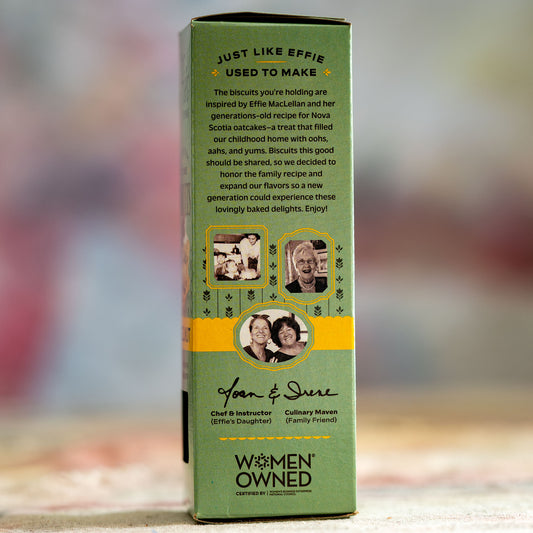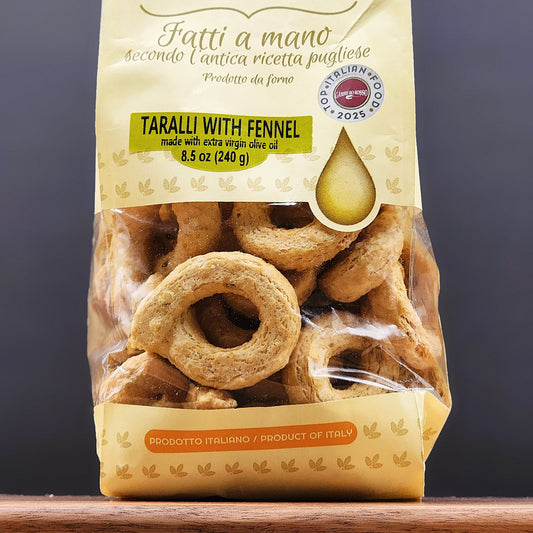Crackers & Biscuits
about Crackers & Biscuits: click here to read more
We love these crackers! We eat (try) a lot of crackers, and many are okay, some are good, rarely do they qualify as "betcha-can't-eat-just-one". All of these sweet and savory crackers do ...
Crackers, cookies, digestives, crisps, and knekkebrød all belong to the wide family of baked or fried snack foods, but they differ in ingredients, flavor, and purpose.
Crackers are thin, crisp, dry biscuits made mainly from flour and water, usually savory or neutral in flavor, and often eaten with cheese or spreads.
Cookies (in American English) are sweet, rich baked treats made with sugar and fat, ranging from soft and chewy to crisp. In the U.K., what Americans call cookies are generally known as biscuits, and digestives are a mildly sweet, wholemeal variety with a coarse, crumbly texture—somewhere between a cookie and a cracker.
Crisps (British English for what Americans call potato chips) are thin slices of potato that are fried or baked until crunchy, making them quite different from flour-based crackers.
Knekkebrød, or Scandinavian crispbread, is a traditional Norwegian and Swedish staple made from whole grains—often rye—mixed with water and salt, then baked until extremely dry and crisp. It has a nutty, hearty flavor and a long shelf life, making it ideal as a bread substitute served with cheese, butter, or cold meats.
Unlike cookies or digestives, knekkebrød contains little to no sugar or fat, resembling a rustic, whole-grain cracker more than a sweet biscuit.
The main distinctions come down to sweetness, grain type, and texture: crackers and crispbreads are savory and dry; cookies and digestives are sweet and richer; and crisps are fried, potato-based snacks rather than baked grain products.
-
Effie's Homemade Walnut with Cranberry and Fennel Biscuits
Regular price $8.95 USDRegular priceUnit price / per$0.00 USDSale price $8.95 USD -
Effie's GRUYERE Oat Biscuits
Regular price $9.95 USDRegular priceUnit price / per$0.00 USDSale price $9.95 USD -
Effie's Homemade Almond with Cardamom Biscuits
Regular price $8.95 USDRegular priceUnit price / per$0.00 USDSale price $8.95 USD -
Effie's Homemade Oatcakes
Regular price $8.95 USDRegular priceUnit price / per$0.00 USDSale price $8.95 USD -
Effie's Homemade Pecan Nutcakes
Regular price $8.95 USDRegular priceUnit price / per$0.00 USDSale price $8.95 USD -
Effie's Homemade Corncakes
Regular price $8.95 USDRegular priceUnit price / per$0.00 USDSale price $8.95 USD -
Sea Salt Knekkebrod Norwegian Crispbread
Regular price $13.95 USDRegular priceUnit price / per$0.00 USDSale price $13.95 USD -
Rosemary and Lemon Knekkebrod Norwegian Crispbread
Regular price $13.95 USDRegular priceUnit price / per$0.00 USDSale price $13.95 USD -
Effie's Homemade Hazelnut Oat Biscuits
Regular price $9.95 USDRegular priceUnit price / per$0.00 USDSale price $9.95 USD -
Danieli Handmade Taralli with Fennel
Regular price $8.95 USDRegular priceUnit price / per$0.00 USDSale price $8.95 USD -
Fine Cheese Co. Olive Oil and Sea Salt Crackers
Regular price $9.95 USDRegular priceUnit price / per$0.00 USDSale price $9.95 USD -
Potters Table Gluten Free Seeded Crisps
Regular price $15.95 USDRegular priceUnit price / per$0.00 USDSale price $15.95 USD -
Fine Cheese Company Gluten Free Olive Oil and Sea Salt Crackers
Regular price $10.95 USDRegular priceUnit price / per$0.00 USDSale price $10.95 USD -
 Restocking - choose Notify me
Restocking - choose Notify meZero Grano Gluten Free Crackers
Regular price $13.95 USDRegular priceUnit price / per$0.00 USDSale price $13.95 USDRestocking - choose Notify me -
Restocking - choose Notify me
Tarallini with Fennel Seeds
Regular price $7.95 USDRegular priceUnit price / per$0.00 USDSale price $7.95 USDRestocking - choose Notify me -
 Restocking - choose Notify me
Restocking - choose Notify meEffie's Homemade Ginger Biscuits
Regular price $8.95 USDRegular priceUnit price / per$0.00 USDSale price $8.95 USDRestocking - choose Notify me -
 Restocking - choose Notify me
Restocking - choose Notify meEffie's Cocoa Cakes
Regular price $7.95 USDRegular priceUnit price / per$0.00 USDSale price $7.95 USDRestocking - choose Notify me




















